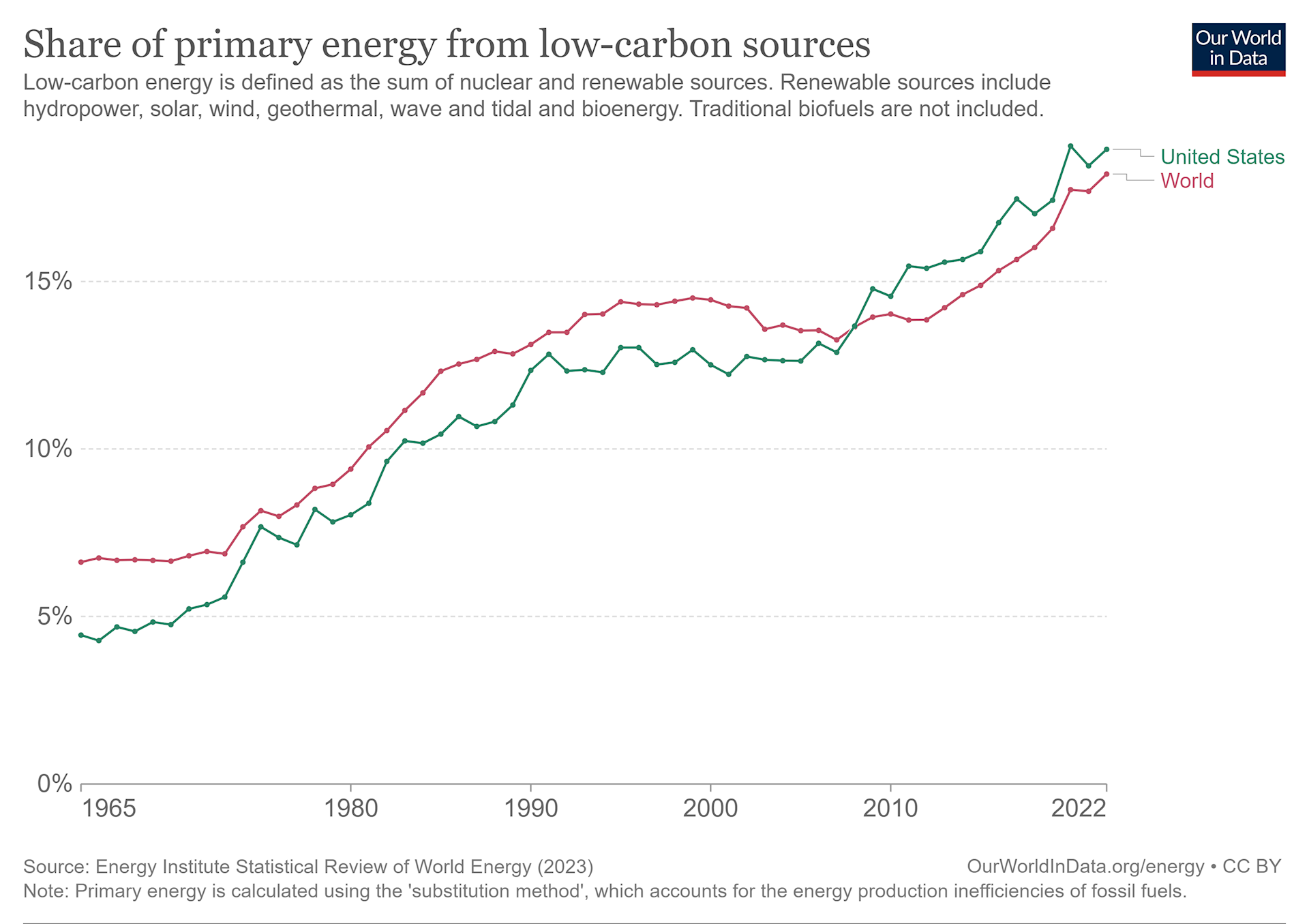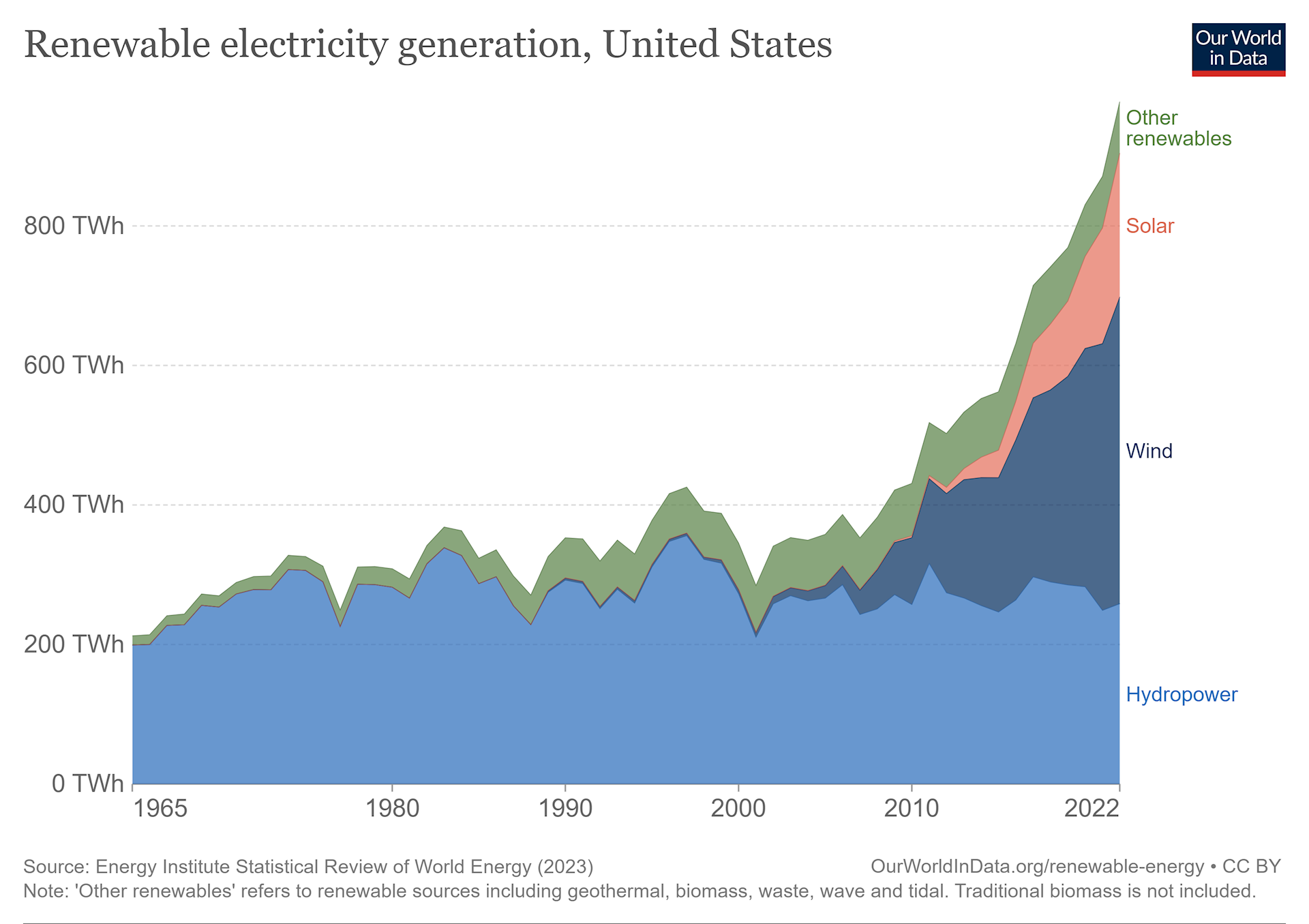
Two weeks ago, Cara Buckley wrote an article for the New York Times, “How Climate Week in New York Turned Into ‘Burning Man for Climate Geeks.’” In the article, she quoted Oscar Soria, a campaign director for international advocacy organization Avaaz, who referred to Climate Week as “becoming the Davos of climate as well. More exclusionary, more for the elites.” Helen Clarkson, chief executive of The Climate Group, which runs Climate Week, said in the article that it is more like Fashion Week, “where people in the industry you need to work with are in the same place.” The Climate Week hyperbole garners lots of headlines, and it should, because the topic is of great importance.
As shown in the article, “Is the World Making Progress in Decarbonizing Energy?” by Our World in Data’s Hanah Ritchie, our share of primary energy from low-carbon sources has increased, and we as a planet are making progress. As you can see from the graph below, the improvement in the United States is slightly better than the rest of the world.

Plus, based on data in the following graph on renewable energy from Our World in Data, you see continuing growth in renewable electricity generation in the United States from 2010 to 2022. Extrapolating beyond 2022, we expect our nationwide growth of renewables and the overall increase in renewable electricity produced to continue to steadily increase, particularly when we realize the price of renewables is expected to continue to decrease.

However, considering NASA’s recent announcement, “Summer of 2023 was Earth’s hottest since global records began in 1880,” and the National Oceanic and Atmospheric Administration’s “U.S. Billion-Dollar Weather and Climate Disasters” article, in which it states, “In 2023 (as of September 11), there have been 23 confirmed weather/climate disaster events with losses exceeding $1 billion each to affect United States,” it’s apparent that although we have made gains, we have a long way to go.
That is then compounded by Renee Cho’s Earth Day 2022 article for Columbia Climate School, “What Is Decarbonization, and How Do We Make It Happen?” in which she said, “There are two aspects to decarbonization. The first entails reducing the greenhouse gas emissions produced by the combustion of fossil fuels. This can be done by preventing emissions through the use of zero-carbon renewable energy sources such as wind, solar, hydropower, geothermal and biomass, which now make up one-third of global power capacity, and electrifying as many sectors as possible. Energy efficiency will reduce the demand for energy, but increasing electrification will increase it, and in 2050, the demand for power is expected to be more than double what it is today [emphasis added].”
Events such as Climate Week and Energy Efficiency Day are important, and highlighting the gains we have made in energy efficiency and decarbonization are good. We should take every opportunity possible to create as much hoopla and attention on this topic as we can. Considering the escalating problems our planet suffers daily, much of the hyperbole surrounding Climate Week can be justified, because we are getting to a point where everyone recognizes something needs to be done quickly. We still have so very far to go!
Bill Bradford can be reached at bbradford@hanson-inc.com.